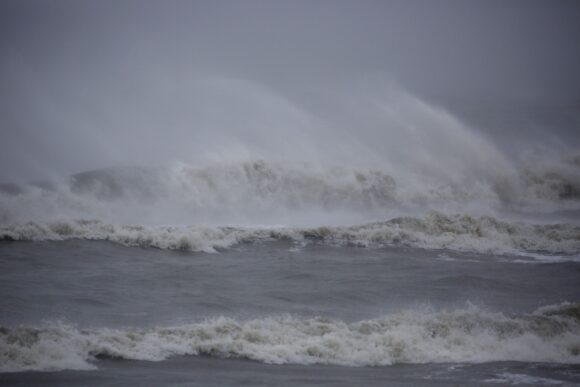Hurricane Lee has become the strongest Atlantic storm since 2019 with winds of 165 miles (266 kilometers) per hour, and the US National Hurricane Center said the Category 5 system isn’t done growing yet. While the storm is far from land, forecasters aren’t certain of its ultimate path.
Lee’s top winds are forecast to reach 180 miles per hour later Friday as it moves “over even warmer waters,” John Cangialosi, a senior hurricane specialist at the center, wrote in his forecast.
“It is way too soon to know what level of impacts, if any, Lee might have along the US East Coast, Atlantic Canada, or Bermuda late next week, particularly since the hurricane is expected to slow down considerably over the southwestern Atlantic,” Cangialosi wrote. “Regardless, dangerous surf and rip currents are expected along most of the US East Coast beginning Sunday.”
If Lee’s winds reach their maximum forecast speed at 180 mph, it would be one of only seven in the satellite era since 1966 to reach that strength, Phil Klotzbach, a hurricane researcher at Colorado State University wrote in a social media post.
A climate change-fueled heat wave across the world’s oceans has been super-charging storms since January. On Thursday, in the Pacific west of Mexico, Hurricane Jova also reached Category 5 strength for a few hours with winds of 160 mph.
In addition to Lee, Tropical Storm Margot has also formed in the central Atlantic and is forecast to move north later next week in the vast open area of the ocean between Bermuda and the Azores. It is the basin’s 14th storm counting an unnamed system in January. This means the Atlantic, with more than two months remaining in hurricane season, has already produced an average year’s worth of storms.
Photo: Waves break on the beach during Hurricane Dorian in Folly Beach, South Carolina on Sept. 5, 2019. Photographer: Luke Sharrett/Bloomberg
Was this article valuable?
Here are more articles you may enjoy.



 NTSB Unclear Who Was at Controls in Jet Crash That Killed Biffle and 6 Others
NTSB Unclear Who Was at Controls in Jet Crash That Killed Biffle and 6 Others  Twice Injured Firefighter Loses Second Workers’ Compensation Claim
Twice Injured Firefighter Loses Second Workers’ Compensation Claim  Viewpoint: Artificial Intelligence Is Rewriting the Rules for Commercial Lines
Viewpoint: Artificial Intelligence Is Rewriting the Rules for Commercial Lines  Court Ruling Could Help Shed Light on Owners of Litigation Funders, Medical Clinics
Court Ruling Could Help Shed Light on Owners of Litigation Funders, Medical Clinics 

